Predator Proof Chicken Coop Essentials You Need To Know
The reality of backyard chicken keeping is that predators come with the territory. It’s not a matter of IF, but WHEN. So, there are some must-do steps to make a predator proof chicken coop that every chicken keeper NEEDS to know and implement.
We had never lost a chicken, then…
We’re grateful in our 9+ years of keeping backyard chickens to have a pretty good track record.
This includes about 5 years of raising chickens in our suburban backyard where we never had a predator casualty! We started with free-ranging 6 hens out of a stationary coop and quickly learned two things:
1) Our chickens got more and more adventurous over time.
2) More and more predators took note of our chickens over time.
Hawks, raccoons, skunks, neighbor’s dogs, and even the family of foxes that moved in next door every winter. We ran up against all of it.
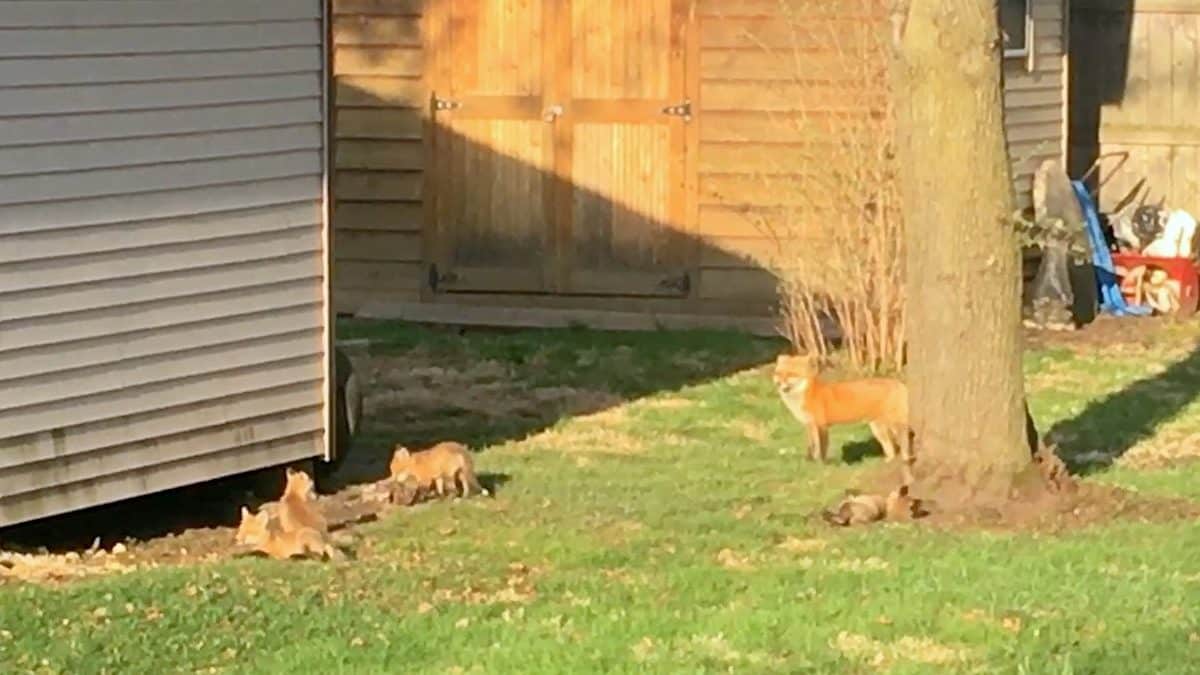
That’s when we discovered mobile coops and built an A-frame chicken tractor out of a used kids swing set. Moving them to fresh grass every day gave us many of the benefits of free-ranging while keeping them protected during the day and night. It worked great!
When we moved to our current 5-acre homestead, we expanded once again to 50+ chickens that roam free all day and sleep in our chicken coop inside our barn at night. That many chickens has come with its own learning curve. And because they free-range all day, predators have proven challenging to manage.
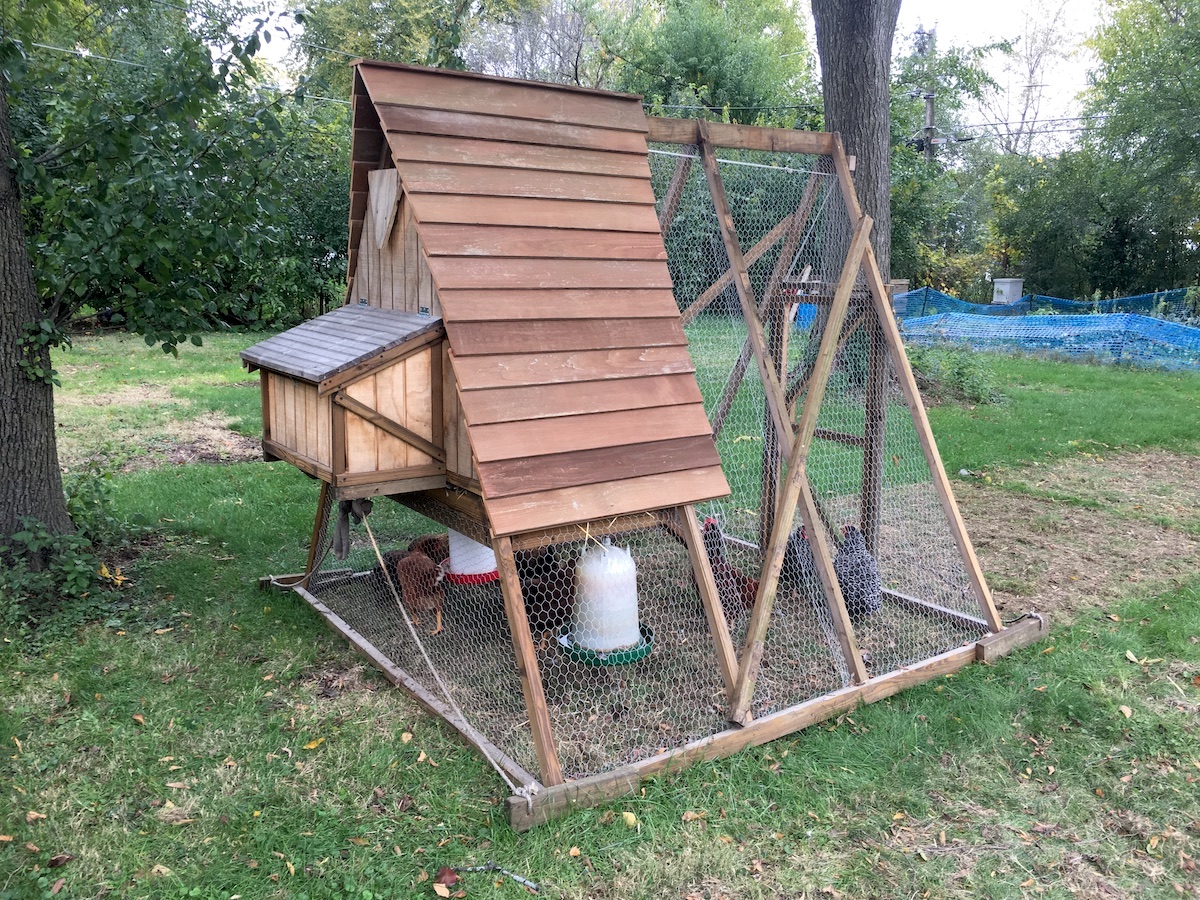
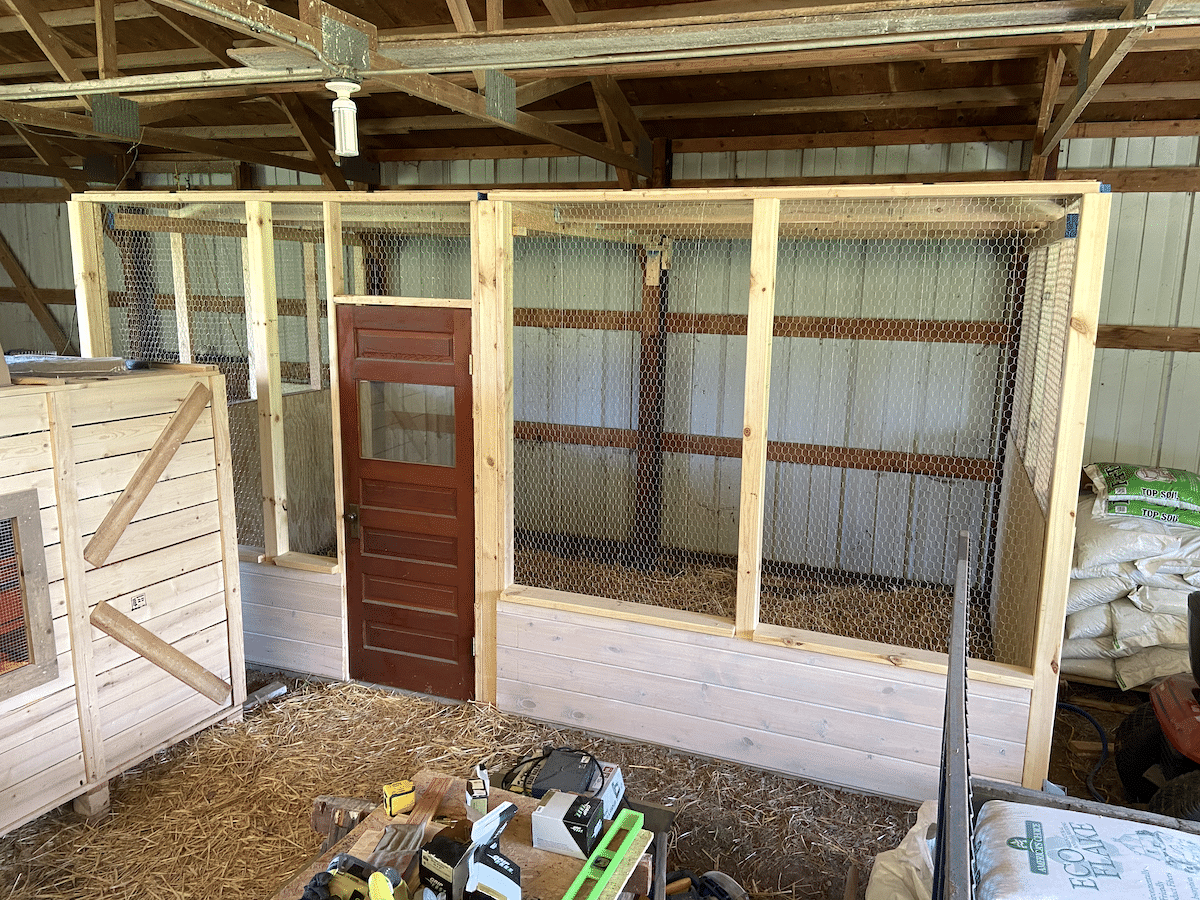
After some close calls, we finally lost our first chicken to a predator—a hawk! Another hawk casualty followed. Then, a rooster mysteriously disappeared one day—likely picked off by a fox. But, we’ve taken some measures and not had any incidents since!
Whether you’re on an urban or suburban lot, or out in the country, we’ll share everything we’ve learned about keeping your feathery flock safe all day and all night!
Common Chicken Predators
When it comes to predators, chickens are unfortunately an easy prey.
By day, chickens can be oblivious and flighty. By night, they sleep hard and are entirely immobile and vulnerable. Therefore, the list of predators can be lengthy!
Chicken Predator List:
- Coyotes
- Foxes
- Racoons
- Skunks
- Rats
- Opossums
- Weasels
- Bobcats
- Bears
- Birds of prey
- Neighbor’s (or stray) dogs & cats
- Snakes
Each predator represents different threats and at different times.
Coyotes, foxes, bobcats, dogs, and birds of prey might result in missing chickens that are taken. Smaller chickens, chicks, or eggs can be taken by smaller predators such as opossums, skunks, rats, cats, and snakes (while still including coyotes, foxes, and birds of prey). Predators like birds of prey and raccoons can also result in missing heads or limbs from chickens.
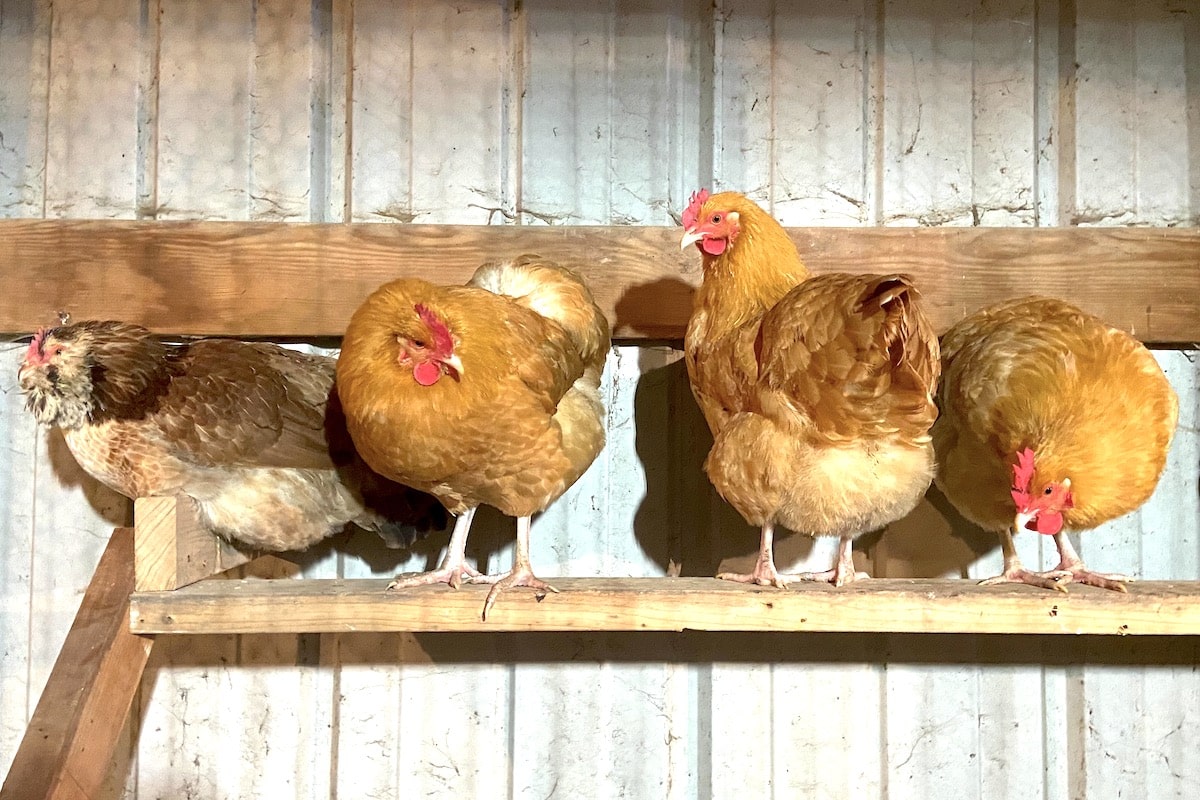
Many predators like foxes and coyotes represent a dual threat during the day and night. Hawks will typically strike during the day while owls might carry off chickens in the evening. Most rodents are on the prowl at night, but could still be active in the early morning or evening hours.
Yes, the threats are many. But keeping your chickens safe is not a lost cause! With some basic measures, you can keep your feathery friends safe and put your mind at ease! Let’s dig in.
Predator Proofing Basics
Any chicken coop is comprised of 6 sides. The four walls of the coop, the top, and the bottom. To keep your chickens safe, all 6 sides must be secure.
If you are thinking your chickens are safe if the coop sits tightly to the ground, you are mistaken. Most of the predators on the above list can easily dig under a coop, even in a single night, to gain access.
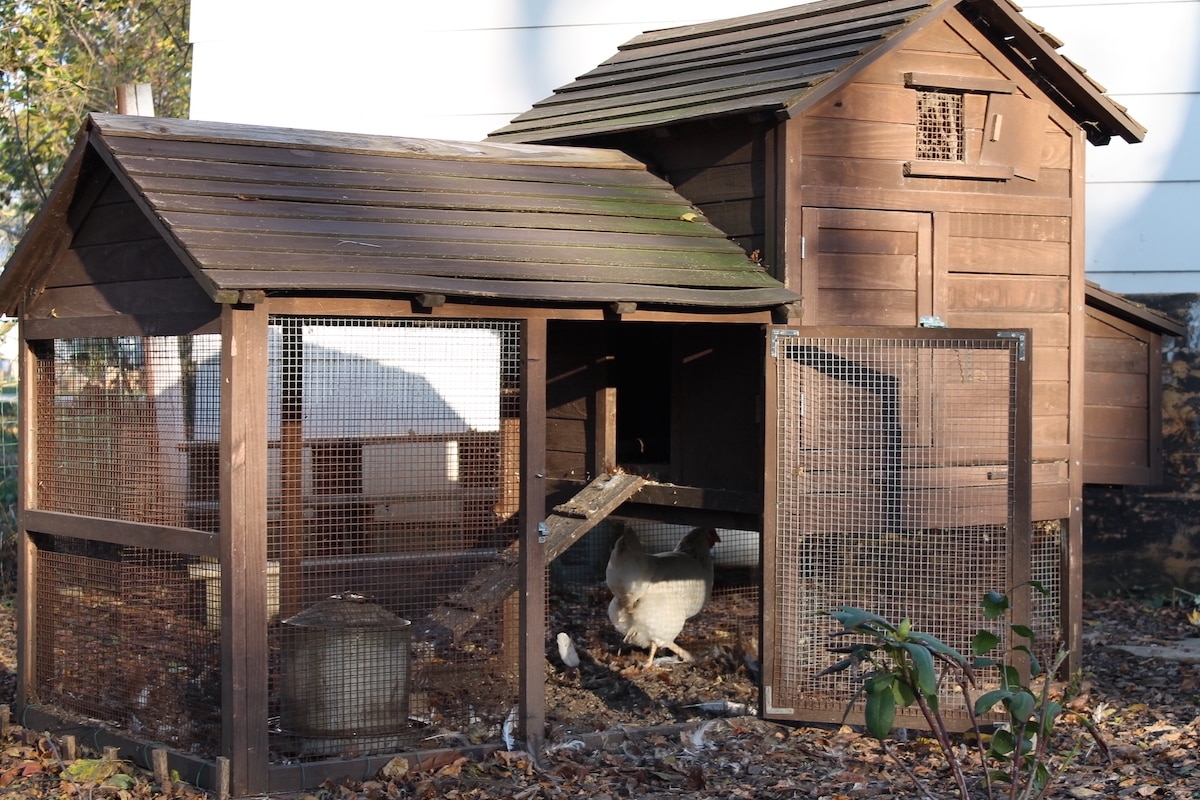
And on top, even with a coop and run wrapped tightly in chicken wire or latches on every door, you birds may still be at risk! The materials and methods you use to secure your coop could make all the difference.
So let’s dig deeper into the essentials of a predator safe chicken coop.
5 Predator Proof Chicken Coop Essentials
Long lists of ways to predator proof your chicken coop can get overwhelming. We’ll look at some alternative options later in this post. But for now, let’s look at the simple predator proofing methods that every chicken keeper should implement.
1. Prevent Predators from Digging Under
As discussed above, the bottom side of a chicken coop is often the most under-looked point of entry for predators. Here are some options to address it.
Fully Enclosed Bottom Side
The ideal solution is to fully enclose the bottom side. This option makes the most sense for small sized coops. We did this for our stationary coop when living in the suburbs. I dug out the footprint of the whole coop 8-12” down. Then I lined the underside of the coop with hardware clothe bending the sides up to meet the bottom of the coop to create a continuous bottom barrier. Then, I filled the base of the coop back in with soil on top of the hardware cloth. With this solution, as long as all the doors were securely shut on top, the coop was 100% predator proof from all 6 sides.

Buried Hardware Cloth
As your coop increases in size, digging out the entire base gets pretty challenging. In this case, you can dig a trench around the base of your coop, and bury hardware cloth vertically at least 12” down. Most predators will try digging down right at the base of your chicken coop and get discouraged by the buried hardware cloth.
Similarly, an alternative is burying a hardware cloth apron around your coop. This involves digging a few inches deep around your coop, burying a horizontal layer of hardware cloth at least 12” wide, and then replacing the soil on top of it. While not as effective as hardware cloth buried vertically, this can be an easier addition to a coop that’s already in place.
Concrete Blocks
Yet another solution is to swap the buried hardware cloth option with either concrete blocks or bricks. This is what we did on our chicken coop inside our barn. The benefit is that the blocks can act as a solid foundation for your coop, especially if it’s on the larger side. Just a note to make sure your blocks still go down at least 12”. Our only went down 8”, and after some rats learned they can dig underneath the blocks this past winter, I’ll be needing to go in and retrofit some hardware cloth in addition.
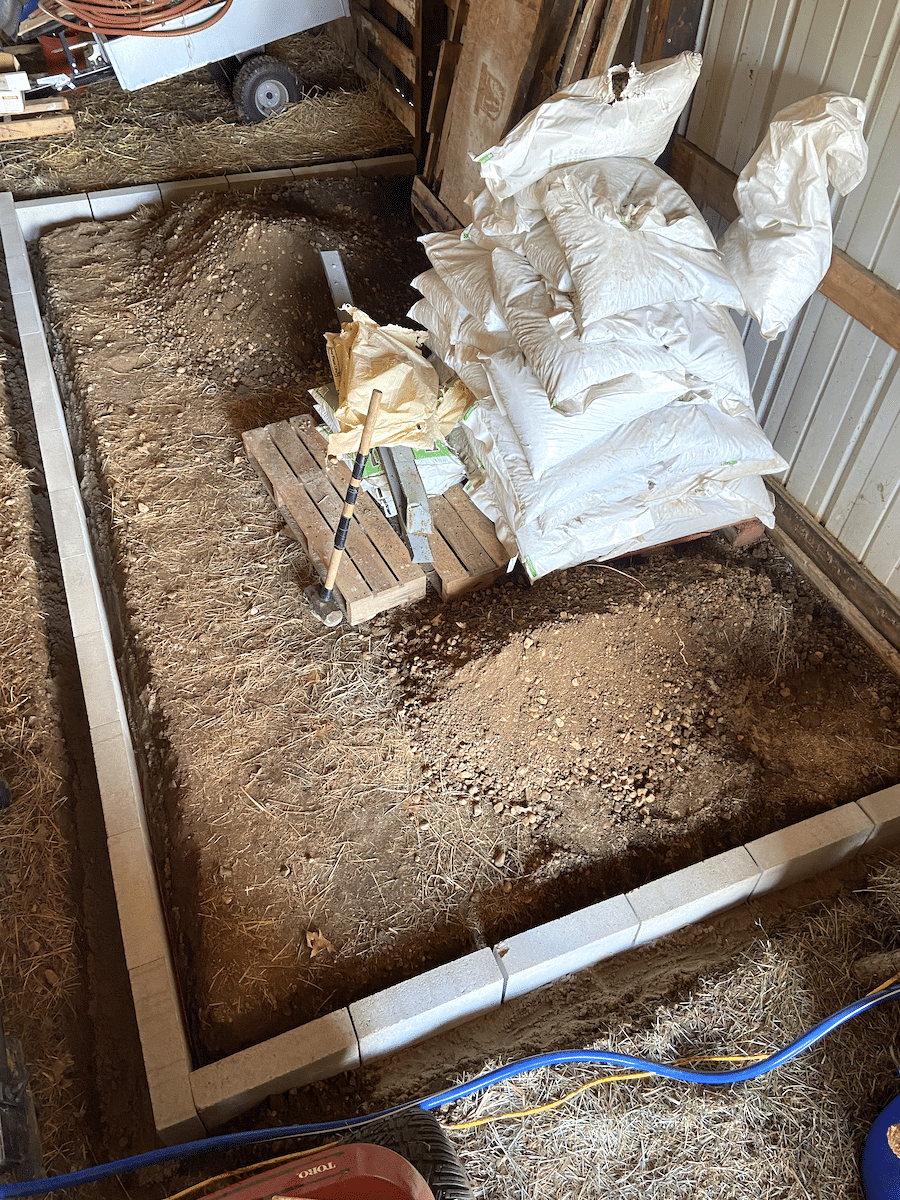
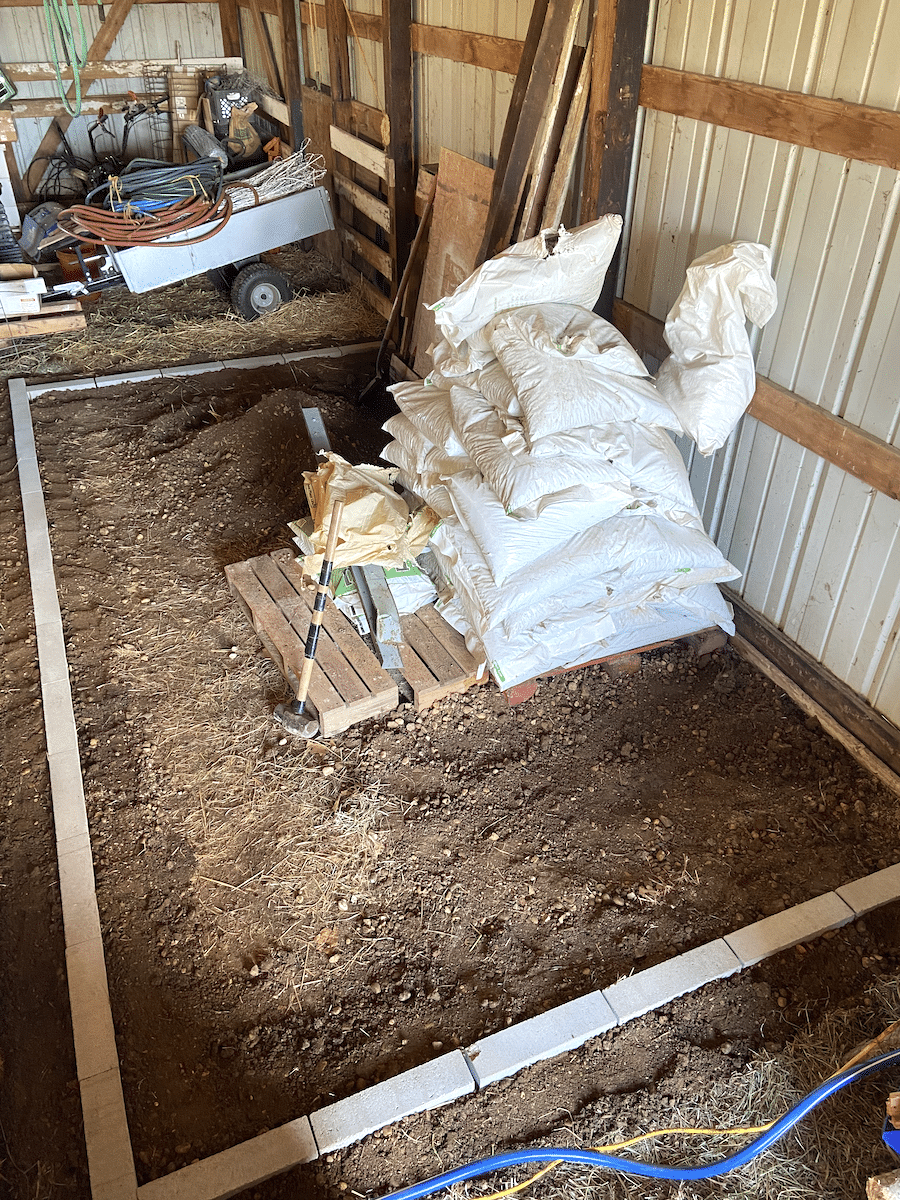
2. Use Hardware Cloth (when necessary)
While chicken wire is most commonly associated with chicken coops, it’s easier for predators to penetrate than you may think. And the hole sizes are large enough for some predators to reach through.
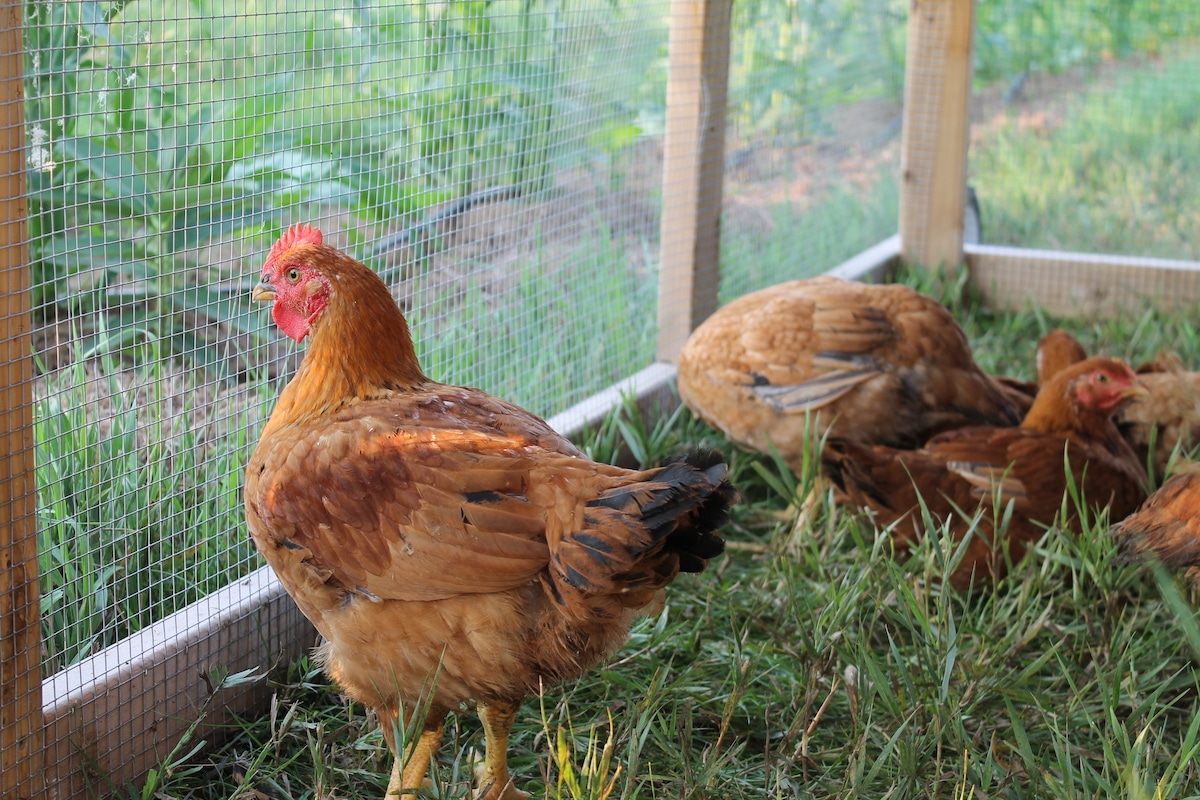
So, when able, use hardware cloth—chicken wires tougher, more robust cousin. Whereas some predators have been known to break through chicken wire, especially at ground level, hardware cloth will stand up to any common backyard chicken predator.
A few considerations:
1) Correct installation is important! Your hardware cloth is only as secure as the fastener holding it. Shallow staples may not hold tight enough to keep large predators out. When building our chicken coops and tractors, I bought 1/2” staples and used a pneumatic brad nailer to install them. Nothing is ripping those out!
2) Use 1/4” Hardware Cloth. Hardware cloth comes with many sizes of mesh openings. Sticking with 1/4” (1/2″ at most) is your best bet. Larger openings might allow predators to get a claw or mouth through it. And smaller predators, like rats or snakes, might be able to sneak through a larger opening. No predator should be able to do substantial harm through 1/4” hardware cloth.
3) Use it if it makes sense. Hardware cloth is expensive! Much more so than chicken wire. This is where the “when necessary” part comes into play. There are times where we’ve opted for chicken wire over hardware cloth and still feel our chickens are safe. For instance, predators are less likely to get through chicken wire when it’s raised off the ground. So, on our barn chicken coop, I built it with solid knee walls at the base, and then installed chicken wire above the walls.
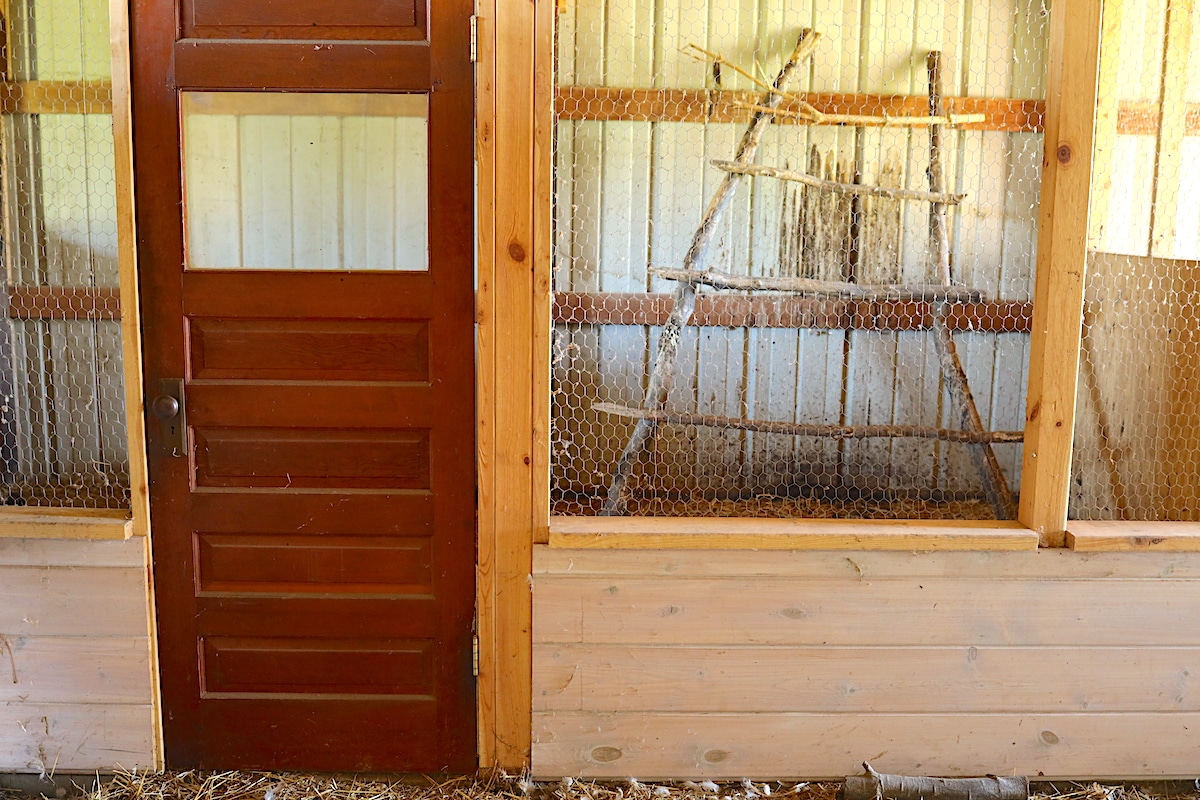
Also, when we built our mobile chicken tractor, I surrounded the run with chicken wire because the enclosed area that the chickens slept in at night was impenetrable. Nothing ever got to them at night and they were protected from aerial predators in the chicken wire run during the day.
3. Make Enclosed Coop Area Impenetrable
The enclosed area of your chicken coop should be able to be 100% sealed tight! This is where your chickens will sleep at night, roost, and lay eggs—the times they’re most vulnerable.
This means that:
- Solid materials should be used (wood, metal, etc.)
- No gaps, cracks, or openings should be greater than 1/4”
- Doors should be able to be closed up completely and latched
- Any air vents should be covered over with hardware cloth
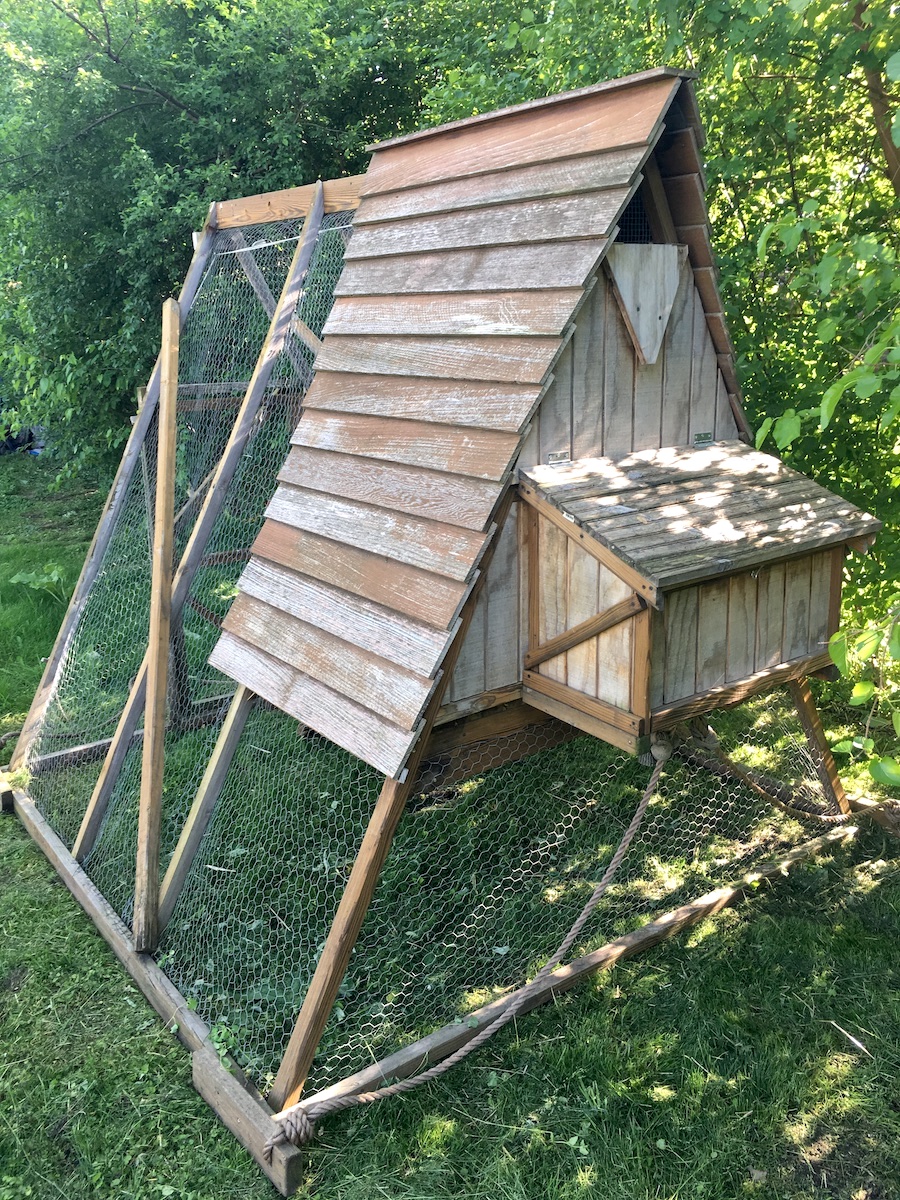
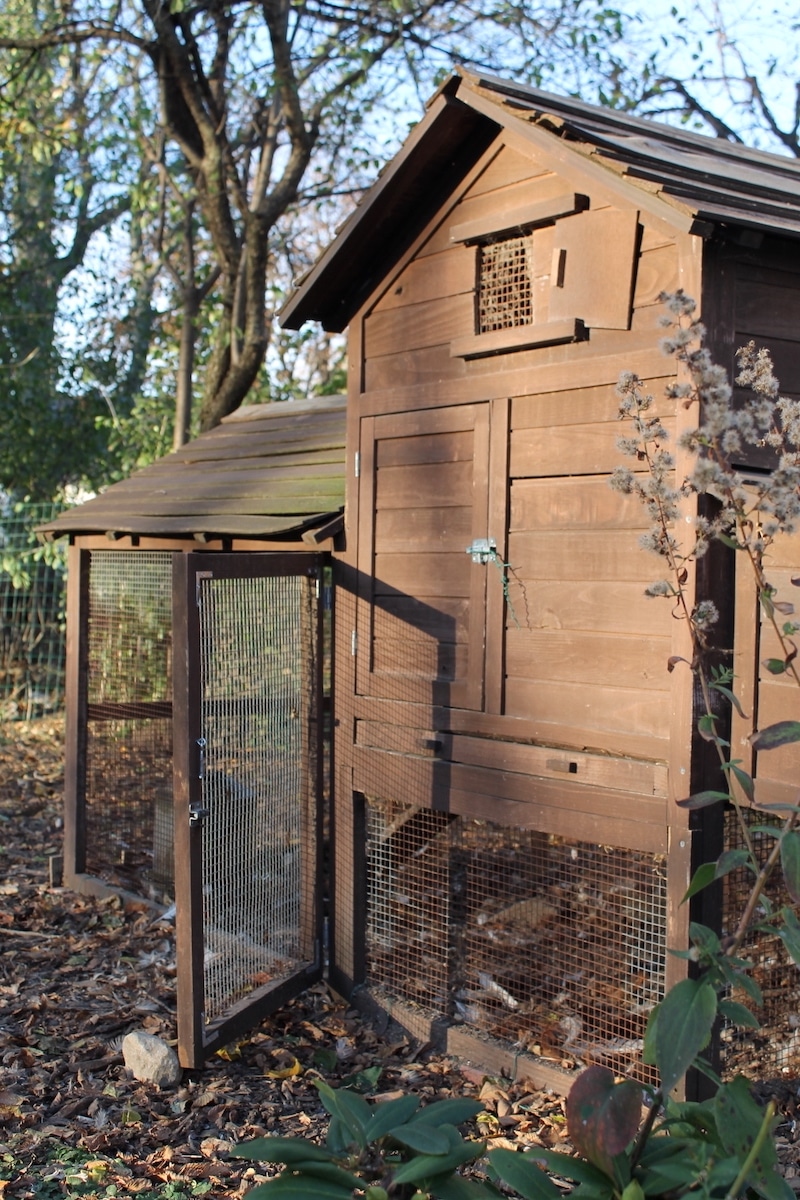
Chickens will begin to retreat to their roosting location as the daylight fades. This is also when predators become most active. Our strategy has always been to go out each evening and close the door of the enclosed area of the coop so the chickens are locked up safe. This way, even if something manages its way into the run, the chickens will still be protected within the coop.
4. Use Secure Door Latches
Going off of that, any time there is a door or access point in the coop, it’s important you install the right type of latch. Animals are smart—and motivated. Raccoons, for instance, have been known to open up simple hook, pin, or throw latches.
A 2-step lockable latch is most secure. This includes spring locks and barrel locks. These require more than just a simple and singular motion to unlock and will prove a bothersome task for any furry foe without opposable thumbs.
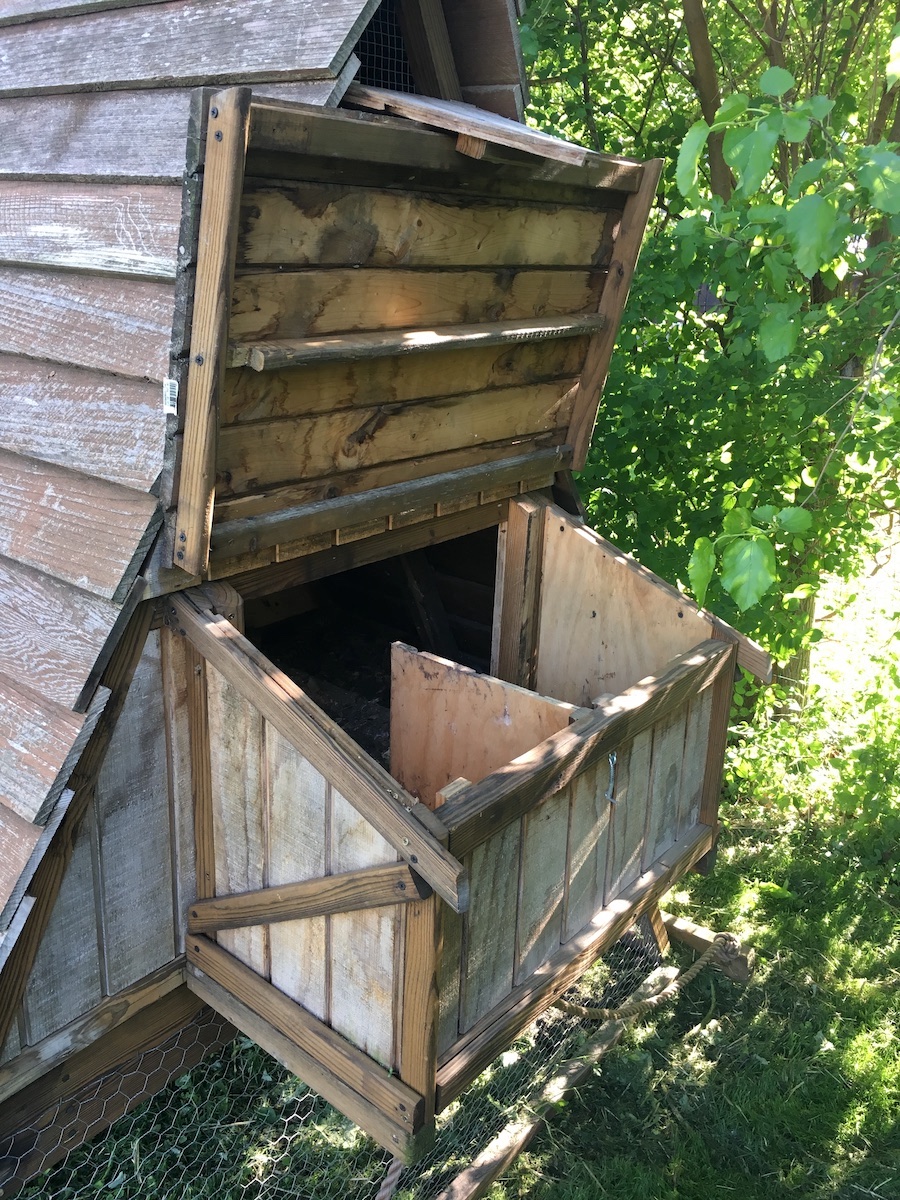
5. Be Observant and Vigilant Every Day
Perhaps the best defense of all is you! Your eyes and ears will help keep your flock protected when threats arise.
There have been numerous times we have heard a commotion in the yard and come bolting out the door only to narrowly interrupt a hungry hawk from dealing its deadly blow. Our takeaway has been, DON’T WAIT! When you hear something suspicious, run out there right away, or throw open the nearest window and yell with everything you got. Sometimes, each second matters!
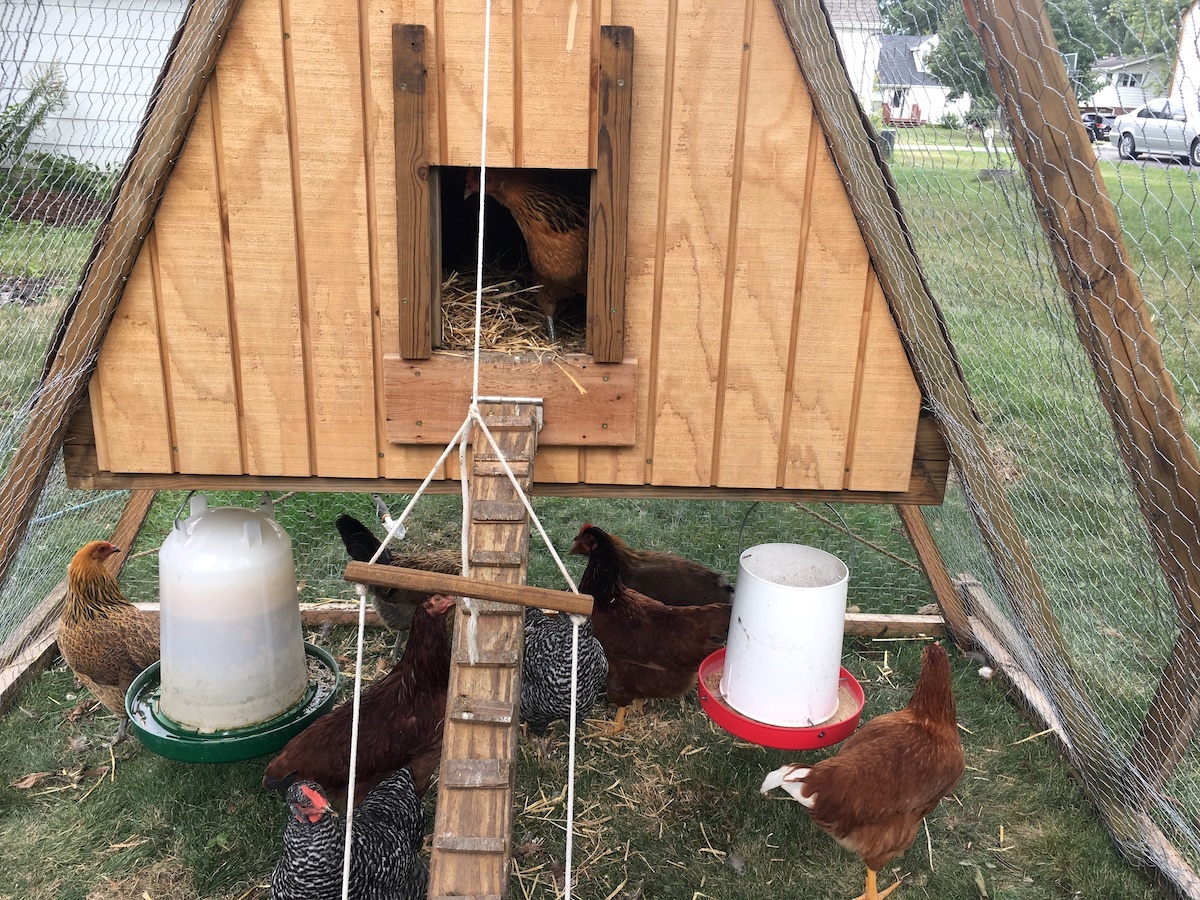
Beyond the extremes of when predators do surface, your role as protector is also important in the mundane daily tasks and chores. Like checking, and then double-checking, that you’ve locked up the coop securely each night. When you’re lying in bed wondering, “Did I close up that latch I opened earlier in the day?”—ALWYAS go out there and check! It’s worth it every time. Even when we doubted, there have been countless times we did indeed leave something open.
And when you’re out doing chores and tending to your chickens each day, check for any signs of predators. Are there tracks around? Was something gnawing or digging? Is something moved or out of place? These things are sure signs predators are about and you should be extra vigilant. Or, you may need to reinforce an area of your coop.
Other Predator Safe Chicken Coop Ideas
Beyond the basics, these are other predator proof chicken coop ideas I have seen successfully implemented in backyard, homesteads, or farms.
Guardian Animals
Many animals or livestock can act as companion animals to help keep chickens safe. This is especially true when chickens are free-ranging and beyond the protection of the coop.
Here is a list of guardian animals that can protect your flock:
Roosters
Geese
Guineas
Livestock Guardian Dogs
Goats
Donkeys
Llamas
Cows
Pigs
While most urban or suburban settings won’t allow it, a rooster is a likely first candidate to guard your flock. Many roosters take their role of protecting the flock very seriously. Our roosters will accompany our hens when out foraging, keep a watchful eye, and alert them of any threats. Roosters will also stand their ground and may even give their life to protect the flock. We had a rooster mysteriously vanish without a trace, while no hens were harmed—likely from standing up to a predator.
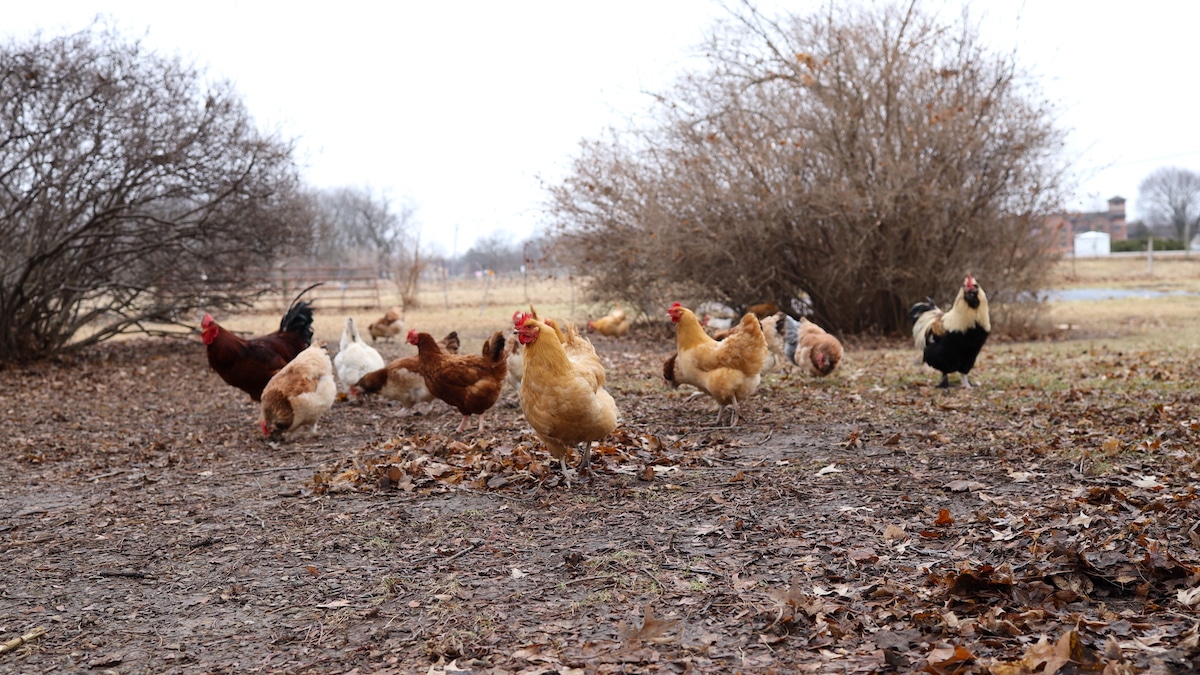
Livestock Guardian Dogs (LGDs) will also ward off predators. Stella, our Maremma LGD on our homestead, takes her role protecting our cows and chickens very seriously. Since getting her, we have rarely seen hawks come anywhere near our chickens where they were under attack almost weekly prior.

Electric Poultry Netting
Electro-netting fencing is a simple way to eliminate ground predator threats for your chickens. Companies like Premier 1 Supplies makes poultry netting setups that can surround your coop and run while also providing boundaries for free ranging.
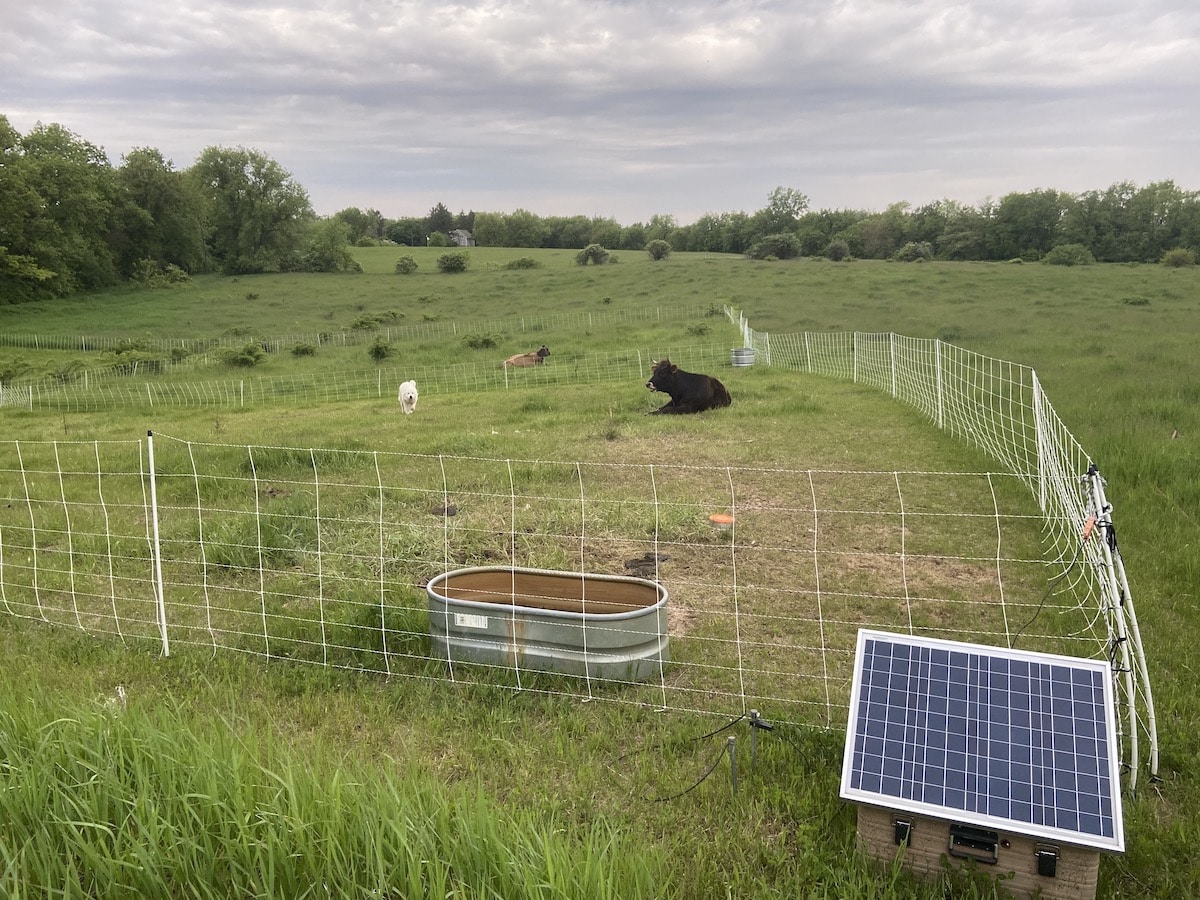
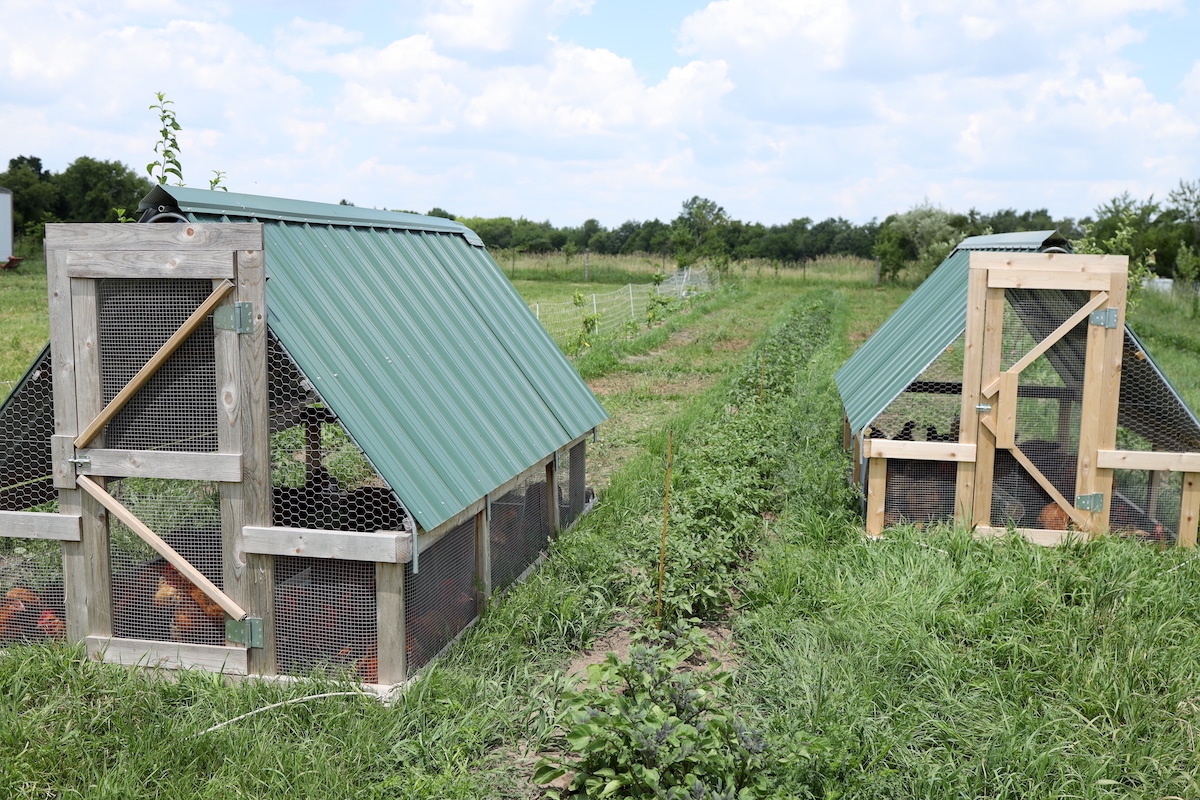
We use this system for rotationally grazing our cows. So if it can contain our cows, it can keep chickens in and predators out! We also use it as a perimeter around our meat chickens we raise in Suscovich Chicken Tractors. They even make solar fence energizers that don’t require an electrical connection and are easy to install, connect to your fencing, and move around.
Predator Detterents
There are many simple or low cost predator deterrents that can be setup in your yard. Perhaps the most simple is to install a bright light on a motion sensor. Predators don’t like surprise or when things shift and change. Along those lines, there are sprinklers on motion sensors that you can setup near your coop and turn on when they detect motion. I’ve even seen someone setup one of those inflatable floppy people you see at car dealerships to keep predators away. And supposedly it worked!
Removing Feed
Even if your chickens are snuggled away safely in their coop, predators might still be interested in the feed that is left behind. Taking your chickens feeder away at nighttime and replacing it in the morning may help reduce pesky predators.
Limit Free Ranging
One tactic we’ve used is to limit free ranging to only when we were at home or outside to keep close watch on things. This can get a little complex, especially if you’re regularly on the go. But we found it to be a happy middle ground for a time when predator pressure was high to still give our chickens the chance to roam free and forage.
Try a Chicken Tractor
As mentioned earlier, our mobile A-frame chicken tractor was the right solution for us to keep our chickens safely contained in the coop and run while still giving them regular access to fresh grass. Check out that post for how we were able to build a custom A-frame chicken tractor from a used kids swing set for hardly any cost!
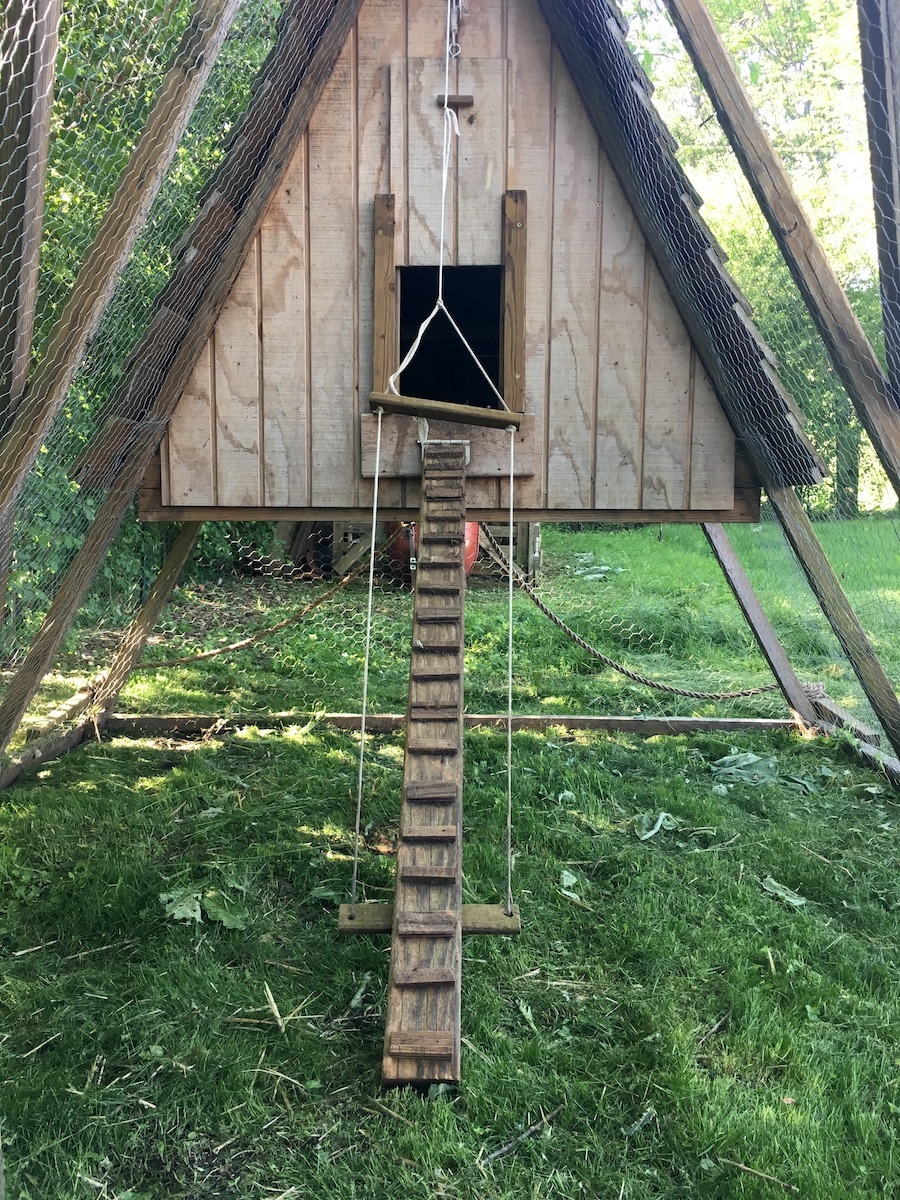
When Predators Strike…
DON’T GIVE UP!
Losing a chicken is heartbreaking. And sets you back. We know.
So, let it be a learning opportunity for next time. Any time a predator breaches your coop they’re revealing areas that can be shored up and reinforced for next time.
What tips and tricks have you found helpful for protecting your feathery friends? Drop us a comment and let us know if you have questions!
Related Posts:
Custom A-Frame Chicken Tractor For (Almost) Free
How To Care For Baby Chicks
Simple Outdoor Chicken Brooder Ideas
How To Care For Chickens In The Winter Basics
Chicken Roost Designs | Two Simple DIY Ladder Perch Ideas
Farm Fresh Eggs | What’s the Difference and How to Use Them Safely
Pin it for later!


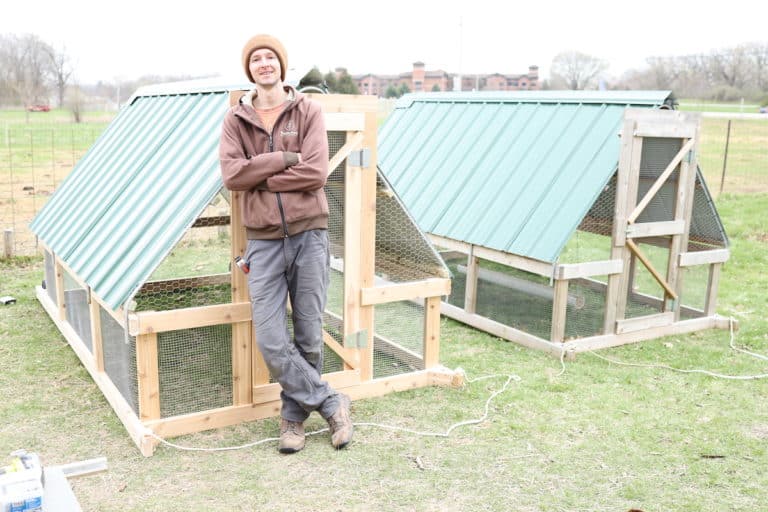


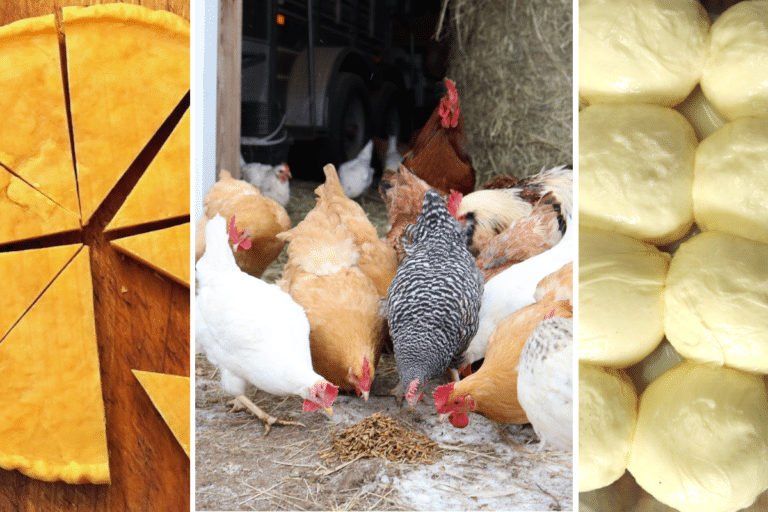
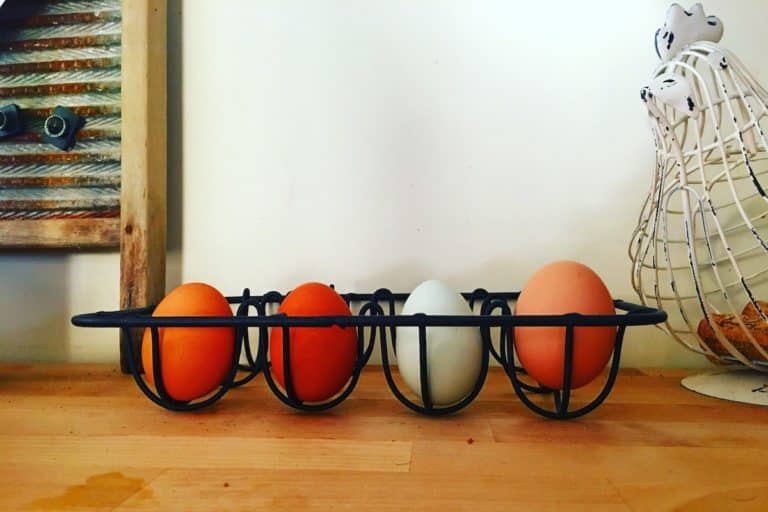

Please consider adding bears to your list of predators. We lost our 8 chickens to one bear.
Thanks for mentioning that and so sorry you had that experience! I’ll update the post to include it soon.
Pigs are good also to keep chicken safe well potbelly pigs anyway .
Good to know! Thanks for sharing!
This was very interesting. Thank you for sharing. I don’t have chickens any more but good info to share with others who do.
Glad it was helpful and thanks for passing it along 🙂
Our chickens insist on sleeping in their secure run (which is surrounded by 1/2″ hardware cloth on all sides. Their indoor coop area is cleaned/raked everyday, but they still insist on sleeping outside. Do you have any comments or advice about this practice? It is something I care very deeply about, but I also know this seems natural to them so I would like to accommodate them as much as possible without endangering them.
Hi! One question that comes to mind is if the inside coop area has proper roosting bars for them? And are they young birds? We’ve had this happen with young birds where they haven’t quite developed the instinct yet to find higher ground, so they’ll sleep on the ground for a period. Chickens will typically want a good roost while sleeping and they’ll want to be as high up as possible. There’s been times where I’ve had to close up chickens in the inside part of the coop until they’re trained to be up there at night. That might be an option if you have a door or you can install some sort of temporary door until they want to stay up there. But if you feel they’re secure in the run, you could also just give it some time and see if they figure things out on their own. Just some thoughts without knowing the full setup or situation but hope that helps!
I thought about covering the entire floor (ground) of my stationary run with hardwire, but I’m concerned that my chickens will injure their paws as they like to dig into the ground. Have you had any issues like this? In my old run, I left the dirt floor uncovered and they would dig and do their dust baths. If I add the hardwire, I do plan on covering it with a sort of flooring and making a dust bath area for them.
Hey there! Good thought! While they do dig down, sometimes even exposing the hardware cloth, I haven’t had any issues with chickens injuring their feet. Not to say it couldn’t happen. They just can’t dig beneath the cloth, so it’s really just like them being on any solid ground when it’s exposed. You definitely want to bury the cloth a bit, maybe 8-12″ deep, so it’s not constantly exposed. You could go even deeper if it’s a concern. Then drape it up on the sides so it’s continuous. Good luck to you!